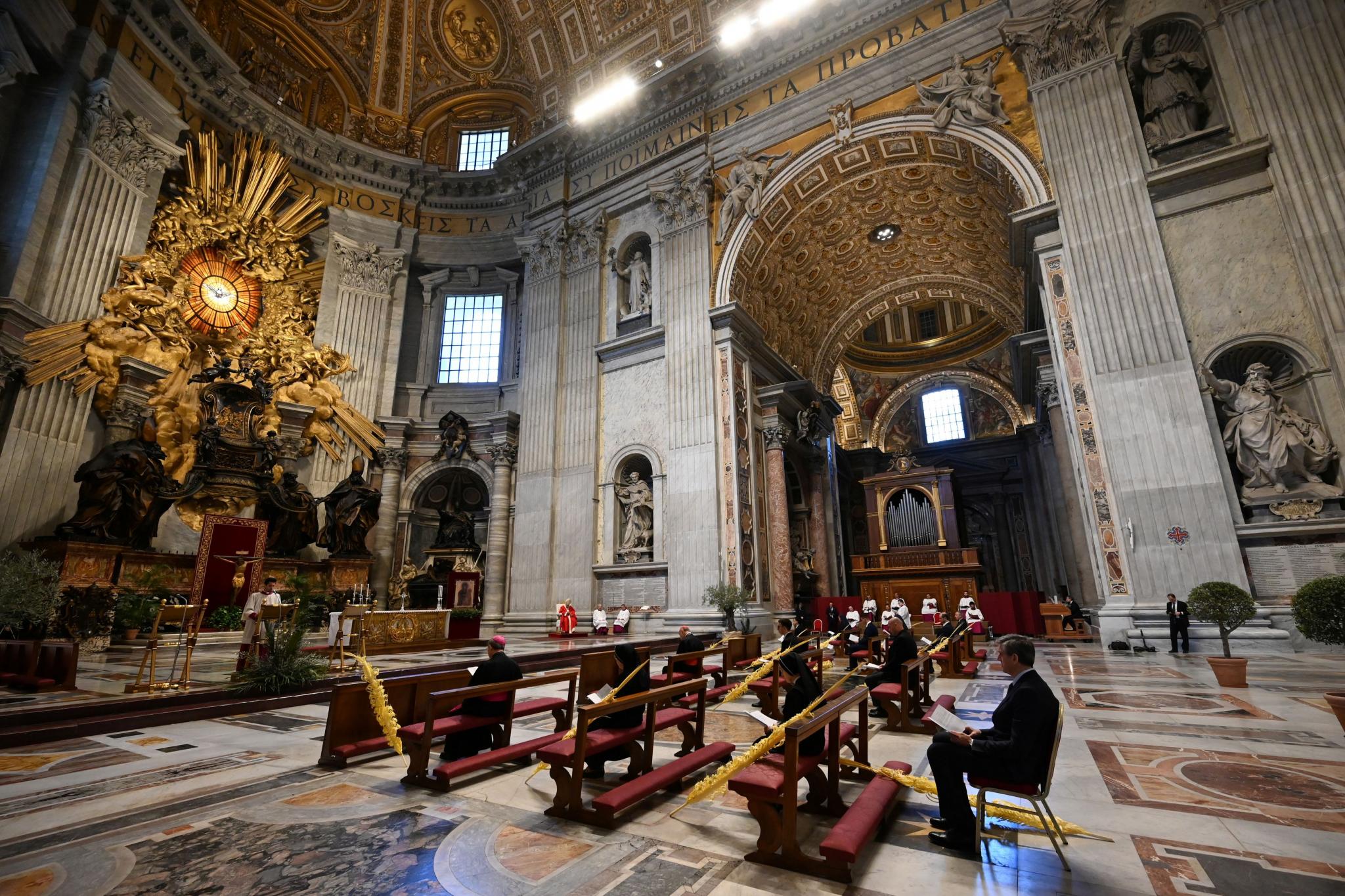Diumenge de Rams, Domingo de Ramos, there is some biblical debate as to Palm Sunday. Of the Four Evangelists, Luke makes no mention of a specific day. Matthew maintains that it is Monday and not Sunday; Mark and John say Sunday. They all agree about one thing, and that was that there were laurel and olive branches as well as palm leaves to greet Christ as he entered Jerusalem.
There has also been differing religious interpretation. In 1969, the Sacred Congregation of Rites published the General Norms for the Liturgical Year and the Calendar. These stated: "The Sundays of this season are called the First, Second, Third, Fourth, and Fifth Sundays of Lent. The Sixth Sunday, which marks the beginning of Holy Week, is called Passion Sunday (Palm Sunday)." The narrative of the Passion thus starts on Palm Sunday, also Passion Sunday, but there is an alternative view that Passion Sunday is in fact the fifth Sunday of Lent and not the sixth.
Regardless of any potential discrepancies, it is clear enough when Palm Sunday is. But how did it come about in terms of its celebration? It would appear to have originated in northern Italy around the start of the eighth century; Rome soon gave it the official liturgical stamp of approval. Prior to there being palms, there had been a preference for olive branches (as had been noted by the Evangelists), but Olive Sunday was to be superseded by Palm Sunday, for which there was the blessing as well.
In Spain, there almost certainly would have been celebrations before, but there isn't any clear evidence until the second half of the ninth century. This was in Vic (Vich) in the Barcelona province, where a palm market existed from 875, which is when the first Palm Sunday celebration occurred.
In Majorca, King Jaume I certainly made reference to Palm Sunday, and so it can be assumed that there was a celebration from soon after the 1229 conquest. For all the Easter processions, however, there are no genuine records until the fourteenth century, but by then Majorca was playing an important role - and this was because of the island's white palms.
Research shows that the royal household was acquiring palm branches from Majorca for Palm Sunday. In 1338, "the royal procurators paid one pound to the women Caterina and Fustereta, vendors of fruit, for two palm branches to be sent to the royal court in Perpignan for the day of the palm". In the following year, there were further purchases, as there also were in 1341. By now the order was larger. "The royal procurators paid one pound (lluira), fourteen shillings (sous) and ten pence (diners) to Pere Joan, a carpenter, for four palm branches to be sent to the royal court."
Pere Joan didn't get the going rate. By 1338 he would have been expecting at least two pounds for his four branches. This seemed to have been the standard price. There again, he was in employment at the royal palace of Almudaina, so perhaps a discounted price was reasonable enough.
The thinking behind the white palm was and is that it has to do with the worship of the Virgin Mary. In Majorca, so it is said, there were conditions that allowed palms to be grown which were subject to limited or no sunlight (presumably shielded by other trees). Quite why or how Majorca came to be central to the white palm trade isn't clear, but somehow it did, even if the island was to be overshadowed in this regard by Elche in the Alicante province. The Palm Sunday procession in Elche is a fiesta in the international tourist interest, and records show that white palms were being used in Elche from at least 1371.
There is an art to ensuring the whiteness. Upper parts of palm trees are covered and tied in such a way that makes the leaves grow white and straight and can therefore be transformed into the various shapes that are used for the processions.
One wonders what they've done with this year's crop.


No comments
To be able to write a comment, you have to be registered and logged in
Currently there are no comments.